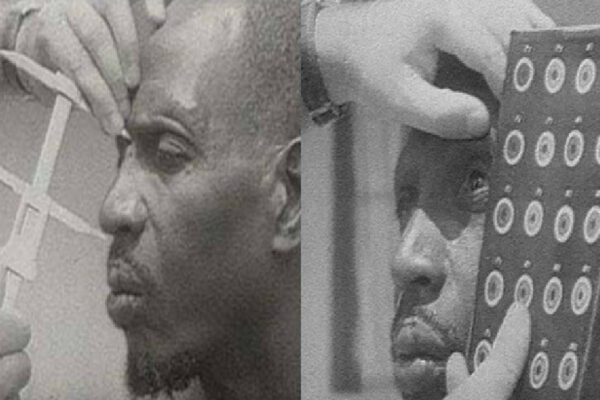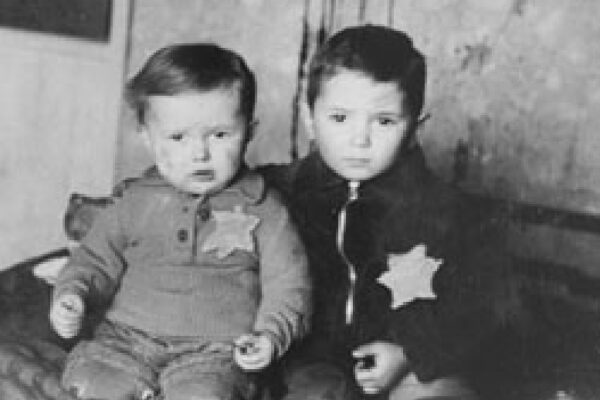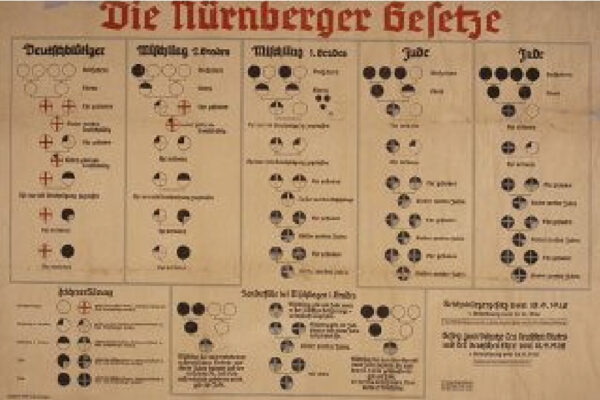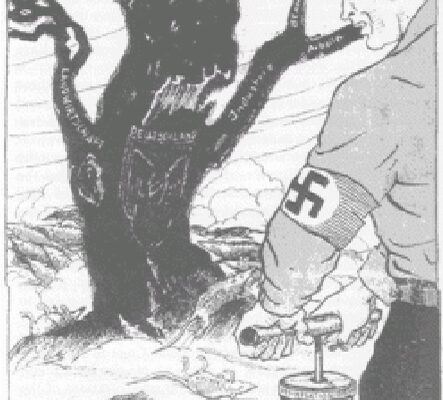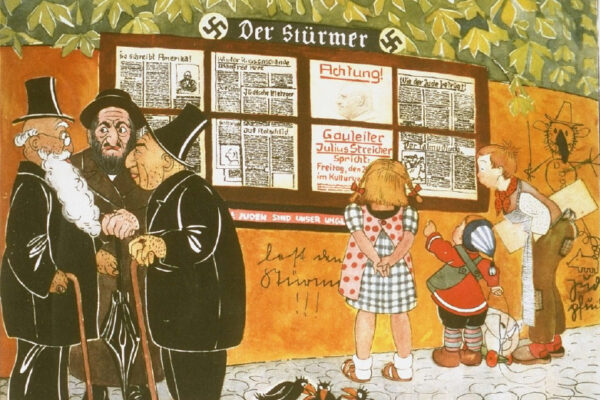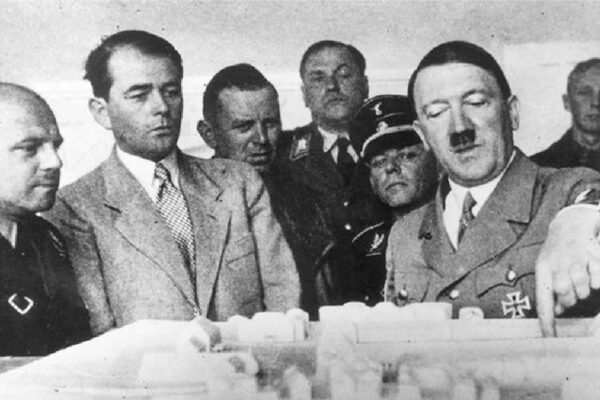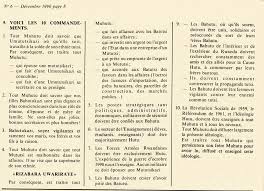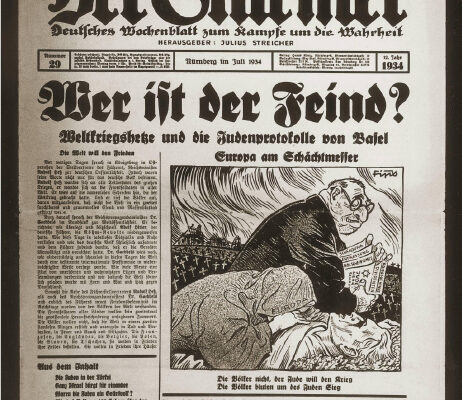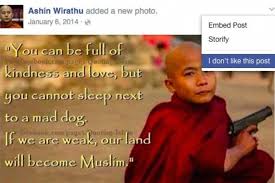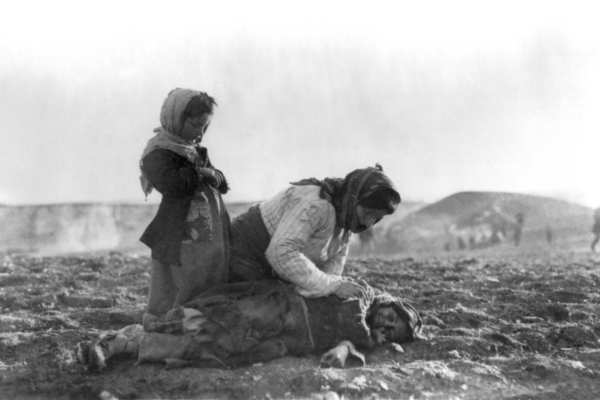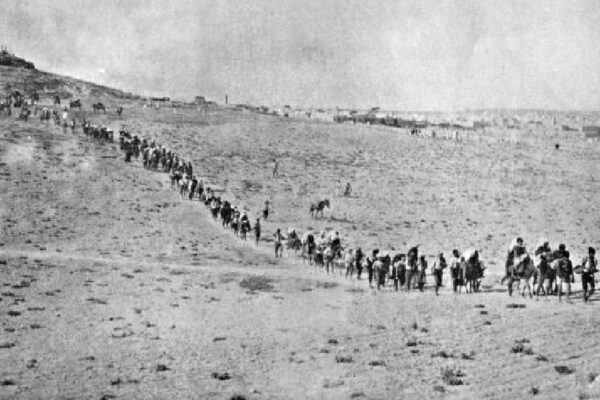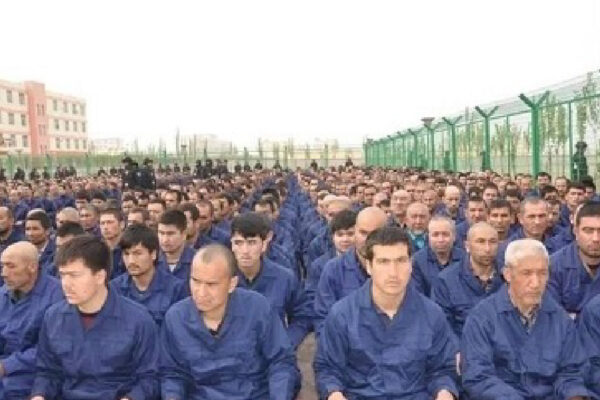1. CLASSIFICATION
Definition:
Individuals or a group in a position of authority distinguishes people into “us” and “them” according to ethnicity, race, religion or nationality.
Example 1:
In the 1930s, Belgian colonial authorities implemented a system of identity cards in Rwanda, imposing a ethnic belonging to Tutsi, Hutu and Twa. This identification policy was taken over by Hutu governments after 1962, further exacerbating tensions between communities.
Example 2:
A big data program in China’s Xinjiang region is used to identify and further discriminate Uyghurs Muslims and other Turkic minorities based on their religion. After being targeted, they are sent to “re-education” camps.
Prevention:
Promote tolerance and inclusion through laws and policies that ensure human rights and civil rights for all.
Sources: Montreal Holocaust Museum, Genocide Watch, De Forges, https://www.hrw.org/news/2020/12/09/china-big-data-program-targets-xinjiangs-muslims
2. SYMBOLISATION
Definition:
The targeted group is assigned names, symbols or colors. The classification is enhanced by a visual manifestation.
Example 1:
In Nazi-occupied Europe, Jews were forced to wear a yellow star.
Example 2:
In Cambodia, the Khmer Rouge forced people from the “Eastern Zone” to wear a blue-and white checked scarf.
Prevention:
Legally prohibit hate symbols and speech that discriminate against any group.
Sources: Montreal Holocaust Museum, Genocide Watch, Holocaust Memorial Day Trust
3. Discrimination
Definition:
The dominant group uses its political and legal power to deny the rights of the less powerful groups, such as civil rights, voting rights and citizenship. The dominant group is driven by the idea of extending or monopolizing power.
Example 1:
In Nazi Germany, the Nuremberg Laws of 1935 stripped Jews of their German citizenship and denied them access to several jobs and marriage with non-Jewish Germans.
Exemple 2:
Until 1985 in Canada, the Indian Act prevented a First Nations woman from retaining her “Indian status” and the rights that flowed from it after marrying a non-status man. In addition, Aboriginal people did not gain the right to vote at the federal level until 1960.
Prevention:
Legally prohibit discrimination on the basis of nationality, ethnicity, race or religion and ensure everyone the right to citizenship and other fundamental rights.
Sources: Montreal Holocaust Museum, Genocide Watch, Holocaust Memorial Day Trust, https://www.thecanadianencyclopedia.ca/fr/article/droit-de-vote-des-peuples-autochtones, https://www.thecanadianencyclopedia.ca/en/article/indian-act
4. Dehumanisation
Definition:
Denying the humanity and dignity of the target group in the eyes of the perpetrators and the rest of the population. Through propaganda and public speeches, members of the discriminated group are compared to animals, vermin, insects or diseases.
Example 1:
During the genocide against the Tutsi in Rwanda, the “Radio-Télévision des Mille Collines” contributed to the dehumanization of the Tutsi by comparing them to “cockroaches”.
Example 2:
In the same way, Nazis via propaganda and speeches equated Jews with “vermin”.
Example 3:
Since 2013, hate speech has been used by different ethnic and political groups in South Sudan. The Nuer group use different expressions to compare the targeted group as illiterate or barbaric people.
Prevention:
Denounce and punish hate speech and incitement to genocide crimes.
Sources: Montreal Holocaust Museum, Genocide Watch, https://www.lemonde.fr/afrique/article/2019/04/08/au-rwanda-les-funestes-echos-de-la-radio-des-mille-collines_5447242_3212.html, https://www.peacetechlab.org/south-sudan-lexicon
5. Organisation
Definition:
A state, army units or militias organize genocidal killing plans.
Example 1:
On April 24, 1915, on the orders of the Ottoman government, hundreds of intellectuals and influential Armenians were arrested. These members of the Armenian elite were murdered in the following weeks.
Example 2:
After implementing a bureaucratic system, consisting mainly of ministries and an army, the Nazi party organized a progressive process of destruction, including “expropriation”, “concentration” and the mass killing of Jews.
Example 3:
Since 2015, the government of Burundi has been training a youth militia (the Imbonerakure) to kill political opponents.
Prevention:
Imposition by the UN of arms embargoes on countries involved in the genocidal massacres and creation of commissions of inquiry. Deny foreign travel visas to the leaders of the genocidal group and outlaw membership to the group.
Sources: Montreal Holocaust Museum, Genocide Watch, https://www.lemonde.fr/afrique/article/2019/04/08/au-rwanda-les-funestes-echos-de-la-radio-des-mille-collines_5447242_3212.html, https://www.peacetechlab.org/south-sudan-lexicon
6. Polarisation
Definition:
Propaganda is used by hate groups and extremists to amplify the division between groups. Moderate members of the dominant group are targeted and executed and laws prohibit interactions between groups.
Example 1:
Messages of hate about Jewish people were spread in the newspaper Der Stürmer by the Nazis.
Example 2:
“The Hutu Ten Commandments” were published in the Kangura magazine, inciting hatred against Tutsi and silence of moderators.
Example 3:
In 2018, Facebook shut down several hate propaganda accounts and pages run by the Myanmar militaries. The accounts incited anti-Muslim hatred.
Prevention:
Protect the human rights of target group members and moderate leaders. Seize the assets of the genocidal group and oppose the disarming of opposition groups.
Sources: Montreal Holocaust Museum, Genocide Watch, Holocaust Memorial Day Trust, https://ici.radio-canada.ca/nouvelle/1129952/rohingyas-propagande-haine-internet-reseaux-sociaux-birmanie
7. Preparation
Definition:
Perpetrators plan the genocidal killings. At this stage, the genocide may be disguised as counter-insurgency or self-defense with leaders often claiming “if we don’t kill them, they will kill us”. The genocidal group will use euphemisms to disguise their intentions, such as “ethnic cleansing” and “purification”.
Example 1:
During the Bosnian genocide, the goal of Serb Forces was to “ethnically purify” the territory. In addition to the eradication of Bosniak civilians, the rape of Bosniak women was considered as one of their “cleansing” techniques. Given the ongoing civil war, acts of genocide were disguised as self-defense.
Example 2:
The Nazis were preparing their process of destruction, stripping Jews of all their belongings and businesses and expanding thousands of prison camps to include, among others, Jews, homosexuals and people living with disabilities.
Prevention:
Send international armed interventions and humanitarian aid. Prosecute incitement and conspiracy to acts of genocide.
Sources: Montreal Holocaust Museum, Genocide Watch, Holocaust Memorial Day Trust, https://ici.radio-canada.ca/nouvelle/1129952/rohingyas-propagande-haine-internet-reseaux-sociaux-birmanie
8. Persecution
Definition:
Death lists are drawn up and victims are identified and separated. Victims are isolated into ghettos, deported to concentration camps, and deprived of water and food leading to starvation. At this stage, programs of forced sterilization and abortions are implemented by the perpetrators to stop procreation of the target group.
Example 1:
Armenians were deported by the forces of the Special Organization to an unknown location, either by train or on foot. The walk lasted for weeks, many were beaten, raped, killed or died of hunger, thirst or exhaustion.
Example 2:
Between 1928 and 1973, the provinces of Alberta and British Columbia passed sterilization laws to limit the reproduction of “unfit” persons. These laws would later increasingly target Aboriginal women. The practice persisted into the 21st century.
Prevention:
Declare Genocide Emergency and provide assistance to refugees and victims with the help or the international community and regional organisms.
Sources: Montreal Holocaust Museum, Genocide Watch, Attarian, 1997, https://www.undispatch.com/the-8-stages-of-genocide-against-burmas-rohingya/, https://www.thecanadianencyclopedia.ca/fr/article/sterilisation-des-femmes-autochtones-au-canada#:~:text=La%20st%C3%A9rilisation%20forc%C3%A9e%20des%20femmes,et%20les%20g%C3%A9n%C3%A9rations%20%C3%A0%20venir.
9. Extermination
Definition:
The genocidal group begins the mass killing of their identified victims. The perpetrators consider their actions as “extermination” given that they do not see their victims as fully humans.
Example 1:
After having killed nearly 2 million Jews by mass shootings, the Nazis create six death camps where more than 2.5 million Jews will be murdered in gas chambers.
Example 2:
Uyghurs and other Turkic minorities detained in “re-education camps” in China who fail to comply with the rules and policies are tortured, raped, or killed. Uyghur women are forced to undergo sterilization or get abortions.
Prevention:
At this stage, only a rapid armed international intervention authorized by the U.N. can stop the acts of genocide. The international community should provide financial and material aid.
Sources: Montreal Holocaust Museum, Genocide Watch, Yahad-In Unum, 2019, United States Holocaust Memorial Museum, https://www.genocidewatch.com/single-post/genocide-emergency-alert-for-xinjiang-china
10. Denial
Definition:
The perpetrators of genocide try to cover up the evidence and deny the commission of their crimes. Witnesses are intimidated and victims are often blamed for what happened.
Example 1:
During Holocaust, Nazis tried to hide evidence of the ongoing genocide and used expressions to deny the existence of places and acts of genocide.
Example 2:
Until today, Turkey continues to deny the existence of the Armenian genocide, considering the events as a civil war.
Example 3:
After decades of denial and refusal by federal governments to recognize the cultural genocide of aboriginal people, Justin Trudeau agreed to the term in 2019.
Prevention:
Punish the criminals by national courts or international tribunal. Educate the population
Sources: Montreal Holocaust Museum, Genocide Watch,Kazancigil, 2015, Vidal-Naquet, 2005, https://www.ledevoir.com/politique/canada/555977/trudeau-ses-deputes-et-le-genocide

